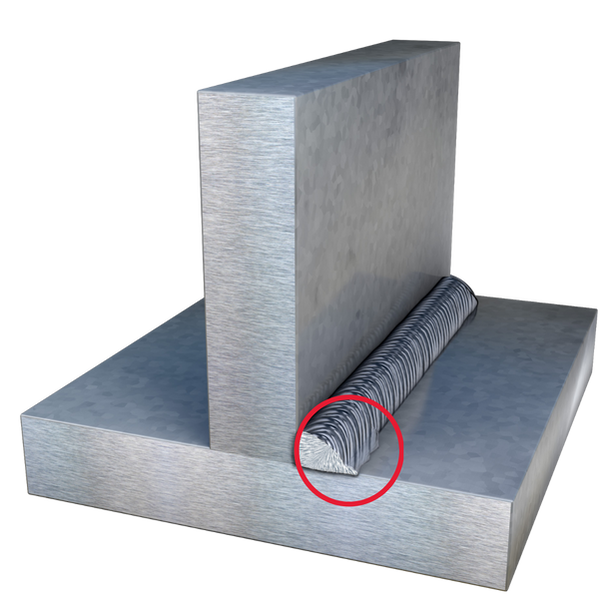Preventing Weld Undercut Demystified: Strategies for Success
Preventing Weld Undercut Demystified: Strategies for Success
Blog Article
Grasping the Art of Welding: Exactly How to Stay Clear Of Undercut Welding Issues for Flawless Manufacture Outcomes
By comprehending the origin creates of undercut welding and applying efficient methods to prevent it, welders can boost their craft to brand-new levels of quality. In the quest of flawless fabrication outcomes, grasping the art of welding to avoid undercut concerns is not just an ability however a necessity for those striving for excellence in their work.
Recognizing Undercut Welding

To avoid undercut welding, welders should make certain appropriate welding parameters, such as changing the current, voltage, travel rate, and maintaining the appropriate electrode angle. Furthermore, making use of the suitable welding strategy for the particular joint arrangement is essential. Utilizing weaving activities or backstepping methods can aid guarantee correct weld metal deposition and lower the possibility of undercut development. Regular assessment of welds throughout and after the welding process is likewise critical to catch any type of undercut very early and make necessary modifications to stop further problems. Preventing weld undercut. By recognizing the sources of undercut welding and carrying out safety nets, welders can accomplish high-quality, structurally sound welds.
Root Causes Of Undercut in Welding
Recognizing the elements that add to damage in welding is vital for welders to produce top notch, structurally sound welds. When the weld steel does not effectively fill up the groove developed between the base steel and the formerly transferred weld metal, undercutting takes place. A number of variables can bring about undercut in welding. One common reason is extreme warm input. Welding at high temperatures for extended durations can lead to the base metal thawing more than desired, bring about damage. Inadequate welding incorrect or existing welding speed can also add to undercut. Not enough current may not provide adequate warm to melt the base and filler steels effectively, while extreme speed can stop proper blend, triggering undercut. Additionally, inappropriate electrode angles or incorrect lantern control techniques can produce locations of low weld steel deposition, promoting undercut. Recognizing these causes and applying appropriate welding strategies can assist prevent undercutting concerns, making certain strong and long lasting welds.
Strategies to Prevent Undercutting

To minimize the threat of damaging in welding, welders can use tactical welding techniques targeted at improving the high quality and stability of the weld joints. One efficient approach is to readjust the welding blog criteria, such as voltage, existing, and take a trip speed, to make sure appropriate warm input and deposition. Preserving an appropriate electrode angle and making sure constant travel speed can also help prevent undercut. Additionally, using the correct welding strategy for the details joint configuration, such as weave or stringer beads, can add to decreasing undercutting. Preventing weld undercut.
Employing back-step welding methods and managing the weld grain account can additionally assist disperse warmth uniformly and lessen the danger of undercut. Normal evaluation of the weld joint throughout and after welding, as well as executing high quality guarantee actions, can assist in attending to and identifying undercutting issues their explanation without delay.
Value of Appropriate Welding Specifications
Choosing and maintaining proper welding criteria is crucial for accomplishing effective welds with very little flaws. Welding parameters refer to variables such as voltage, existing, take a trip speed, electrode angle, and shielding gas flow rate that straight affect the welding procedure. These criteria should be thoroughly changed based upon the kind of product being welded, its density, and the welding technique utilized.
Correct welding criteria guarantee the correct amount of warmth is applied to melt the base steels and filler product consistently. If the parameters are established too expensive, it can result in extreme heat input, creating distortion, spatter, or burn-through. On the various other hand, if the parameters are as well low, insufficient fusion, absence of infiltration, or undercutting might take place.
Quality Assurance in Welding Operations

Verdict
Finally, understanding the art of welding calls for a comprehensive understanding of undercut welding, its causes, and techniques to prevent it. By ensuring correct welding criteria and applying top quality guarantee methods, flawless manufacture results can be achieved. It is essential for welders to continually make every effort for quality in their welding operations to stay clear of undercut concerns and create top quality welds.
Undercut welding, a common issue in welding procedures, occurs when the weld steel does not correctly fill the groove and leaves a groove or clinical depression along the welded why not try this out joint.To prevent undercut welding, welders ought to guarantee correct welding specifications, such as adjusting the existing, voltage, travel rate, and preserving the correct electrode angle. Insufficient welding incorrect or existing welding speed can additionally contribute to damage.To reduce the threat of undercutting in welding, welders can use calculated welding techniques aimed at boosting the quality and honesty of the weld joints.In conclusion, understanding the art of welding requires a detailed understanding of undercut welding, its causes, and strategies to prevent it.
Report this page